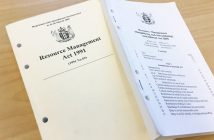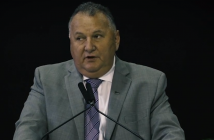The second of a two-part series by AsiaPacific Infrastructure Content Partners Caroline Boot and Kerrie McEwen examines expectations from a new government
Part one examined what has been achieved in 2017 and what still needs some work.

What will the new New Zealand government mean for procurement and tendering in infrastructure and other sectors? Will we see a shift away from Roads of National Significance projects in favour of public transport links and social housing?
Politics
At the time of writing this, there is still much discussion about various infrastructure projects.
Word on the street is that the East-West Link – which has been the subject of years of detailed planning and was poised to be tendered – will be scrapped.
The new government has indicated a preference for diverting funds into light rail. Rail to Auckland airport appears to be a priority; and rail to Northland and/or moving Auckland’s port are also currently being debated.
Although those all may well be worthy projects, a re-prioritisation on infrastructure projects would be a case of ‘back to the drawing board’.
There is likely to be a hiatus in infrastructure construction while the new government assesses priorities and goes through the extensive detailed feasibility and planning processes that are needed in the lead-up to breaking ground.
The announcement of increased investment in our regions will be welcomed by many. This brings consideration of how the substantial funds to be invested regionally will be prioritised; and what will be done to ensure those funds are spent wisely.
Many smaller provincial towns and regions struggle to attract and retain procurement professionals; hence we hope that our new government will underpin their regional investment initiative by supporting development of procurement skills in those areas.
New tools and techniques for procurement
The 2017 year has seen some interesting developments in procurement techniques. Stronger focus on sustainable, quality outcomes needs to be backed up with procurement tools and techniques that deliver on that promise.
RFT documents continue to improve – with tighter focus on questions that reflect the differentiators for the suppliers, based on the risks and opportunities of each specific project.
The era of recycled RFT documents with generic questions is definitely on the wane, as procurement professionals focus more time into effective procurement planning; design project-specific questions that challenge suppliers to plan; and customise the solution they offer to drive the best value.
Over the year, we have seen solid uptake of the Anchored Scales concept for tender evaluation scoring.
Borrowed from the education sector (which has used similar methods for standardising assessment of capability for many decades), this method drives tender evaluators to define their scoring system in factual terms in the planning stages, rather than leaving it to the subjective and often variable opinions of the evaluators once they have reviewed the responses.
It has not been easy to gain acceptance of Anchored Scales – they take time and effort to put together when planning a procurement process. But the benefits achieved far outweigh the initial investment. Not only can there be greater transparency in the RFT to guide suppliers on what will score high, but tender evaluations are far faster, more consistent and more defensible.
Incorporating sections in RFT documents that provide guidance on the scoring systems (without giving everything away!), and definitions of minimum conformance standards, have enabled both suppliers and clients to minimise the time wasted in lost causes.
Armed with this transparency, only compliant responses are submitted and received, saving both parties valuable time and money.
There have also been interesting developments in tender evaluation methods. The Price Quality Method – developed by the NZ Transport Agency and used for over a decade – provides transparency of the amounts that will be paid for additional quality.
Over the past months, we have seen a further development of this suite of tools. The SQP25 spreadsheet tool developed by Clever Buying provides a powerful way of using the quantified ‘risk costs’ on a project to determine ideal weightings for each of the non-price attributes and the price.
This adjunct to the Price Quality Method will be rolled out over the next year, to provide robust and defensible rationales for attribute weightings that support – where appropriate – selection of quality suppliers whose prices are not the cheapest.
It is well established that the NZ Transport Agency leads the field, both nationally and internationally, in procurement. That’s not to say that the Agency is at all complacent – there’s always room to improve. However, we also know that procurement capability across New Zealand is patchy.
Wouldn’t it be wonderful if the skills and processes that have been proven within the Transport Agency were combined with the processes within NZ Government Procurement, to form a unified, coherent model for best practice procurement across all public-sector organisations?
There are signs that NZ Government Procurement and the NZ Transport Agency are working more closely together, at least at a strategic level. However, we believe there is more to be done to align those great models.
Infrastructure New Zealand’s bold vision for a centralised independent procurement agency has gained support through this year.
However, we firmly believe that the ‘top down’ approach of strategic procurement leadership embodied in that vision should be complemented with efforts to align and standardise the approaches and techniques used at the coalface of procurement.
While conferences and forums discuss broad concepts of category management and pipeline management, many RFTs still ask irrelevant questions, allocate weightings and risk without proper planning, and bear little or no regard for value for money or sustainability.
Until procurement professionals are mandated to be qualified in the aspects of tendering that will tangibly drive value for money, the efforts invested in strategic procurement will not result in much added value to public assets or wiser expenditure.
What’s enlightening but not well recognised is that the tools to achieve that consistency and tangible change are already there – within the NZQA Procurement Qualification mentioned earlier in this article.
That qualification – if mandated for sizeable government procurement as it is for the NZ Transport Agency – would drive immediate and tangible results.
Qualified tender evaluators know how to focus procurement on delivering real value for money. They also understand how to comply with Government Rules of Sourcing and ensure ethical, fair and transparent evaluation of the scores of government tenders that are released to the market every week.
Our Government spends $41 billion every year on goods and services. For a tiny fraction of that amount, we could leverage efficiency in procurement process and many times the ROI invested, by achieving better value for money in the goods and services procured for NZ Inc.
About the writers
Caroline Boot and Kerrie McEwen offer insight to all stages of the procurement pipeline – and draw on experience from tendering in over 30 countries, to training tender evaluators in best practice procurement methods.
www.PlanAWriters.com for more tendering resources www.cleverbuying.com for procurement training courses, tools and advice.
- Caroline Boot
- Kerrie McEwen






